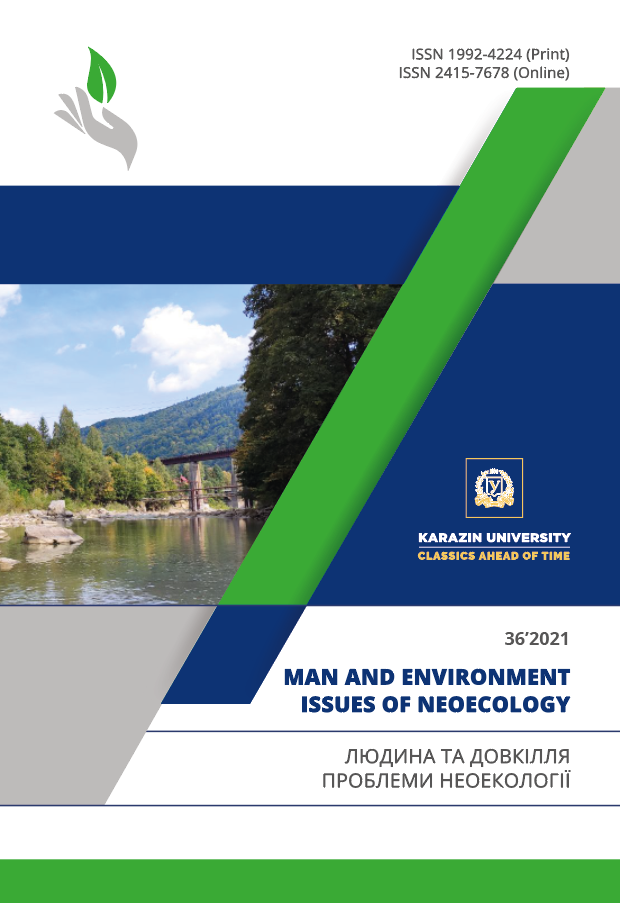Analysis of Volumes and Sources of Waste Containing Persistent Organic Pollutants on the Territory of Odesa Region
Abstract
The priority sources of waste accumulation containing polychlorinated biphenyls (PCBs) in Odesa region are identified and analyzed; the availability and state of programs implementation for the detoxification of unusable РOPs-containing pesticides in the Odesa region is estimated; specific masses of POPs-containing pesticides per capita in each districts are determined; according to the value of specific masses of pesticides, priority districts for organization of measures to detoxify POPs-containing pesticides are arranged and identified; using the updated European methodology, the volumes of PCB leaks from PCB-containing equipment and the volumes of PCB inflows into the environment (soil cover and air basin) are calculated; the results are ranked and priority districts for detoxification of PCB-containing equipment and, as a result, effective implementation of the Stockholm Convention are identified.The largest share of pesticides falls on the residents of Savran (2,660 kg/person), Biliaivka (2.47 kg/person), Kodyma (2,082 kg/person) and Liubashivka (1,197 kg/person) districts, which should become a priority in the program for detoxification of unusable POPs-containing pesticides.
The existing legal base and methodological framework is not enough to effectively implement the requirements of the Stockholm Convention. The program for the detoxification of unusable POPs-containing pesticides for 2018 has not been implemented.
Downloads
Published
Issue
Section
License
Copyright (c) 2021 Михайленко В. І., Сафранов Т. А.

This work is licensed under a Creative Commons Attribution 4.0 International License.
Автори, які публікуються у цьому журналі, погоджуються з наступними умовами:- Автори залишають за собою право на авторство своєї роботи та передають журналу право першої публікації цієї роботи на умовах ліцензії Creative Commons Attribution License, котра дозволяє іншим особам вільно розповсюджувати опубліковану роботу з обов'язковим посиланням на авторів оригінальної роботи та першу публікацію роботи у цьому журналі.
- Автори мають право укладати самостійні додаткові угоди щодо неексклюзивного розповсюдження роботи у тому вигляді, в якому вона була опублікована цим журналом (наприклад, розміщувати роботу в електронному сховищі установи або публікувати у складі монографії), за умови збереження посилання на першу публікацію роботи у цьому журналі.
- Політика журналу дозволяє і заохочує розміщення авторами в мережі Інтернет (наприклад, у сховищах установ або на особистих веб-сайтах) рукопису роботи, як до подання цього рукопису до редакції, так і під час його редакційного опрацювання, оскільки це сприяє виникненню продуктивної наукової дискусії та позитивно позначається на оперативності та динаміці цитування опублікованої роботи (див. The Effect of Open Access).

